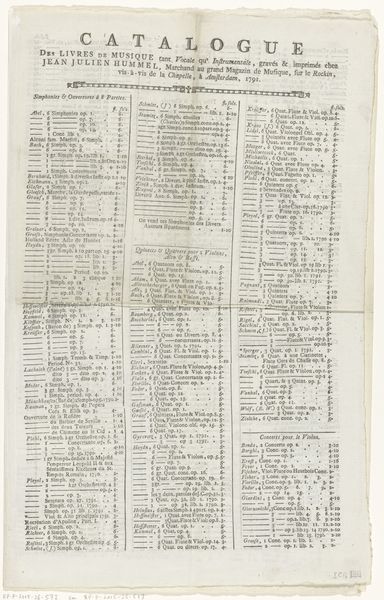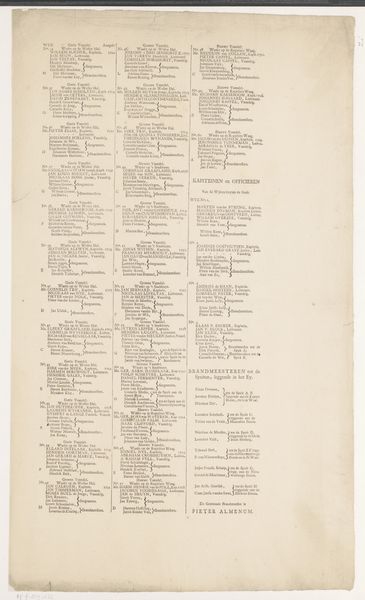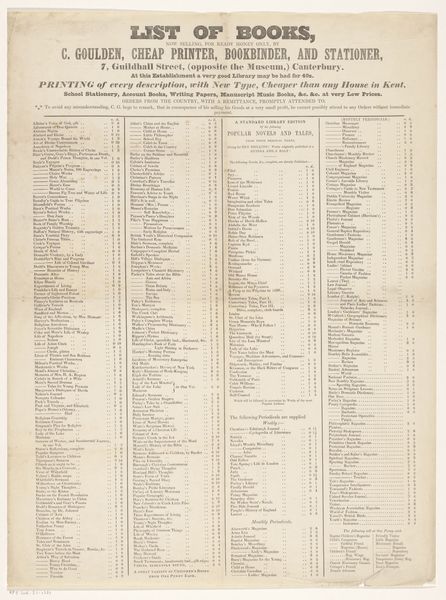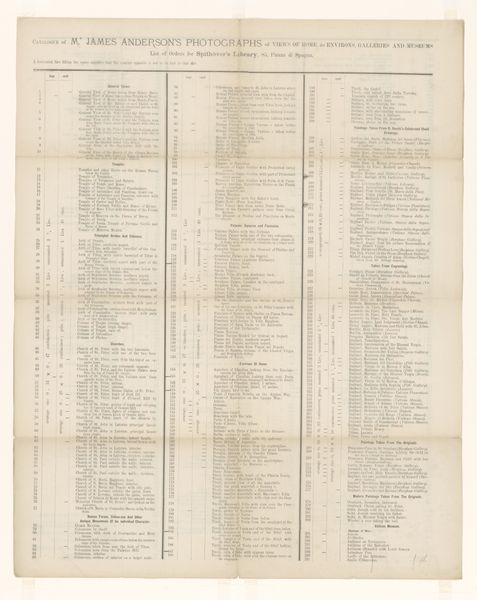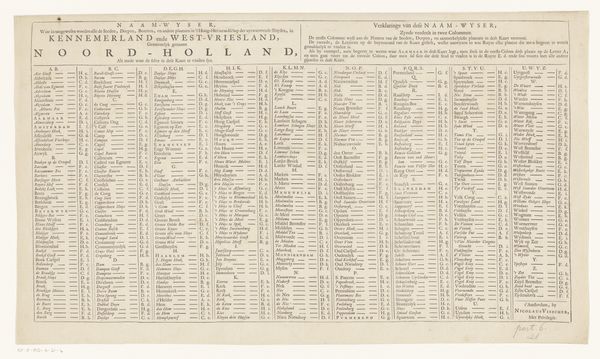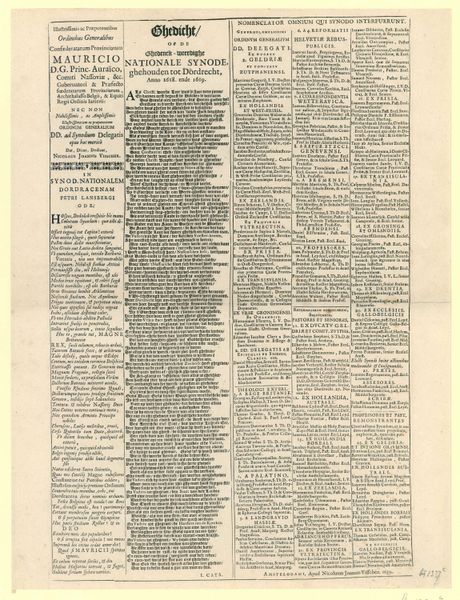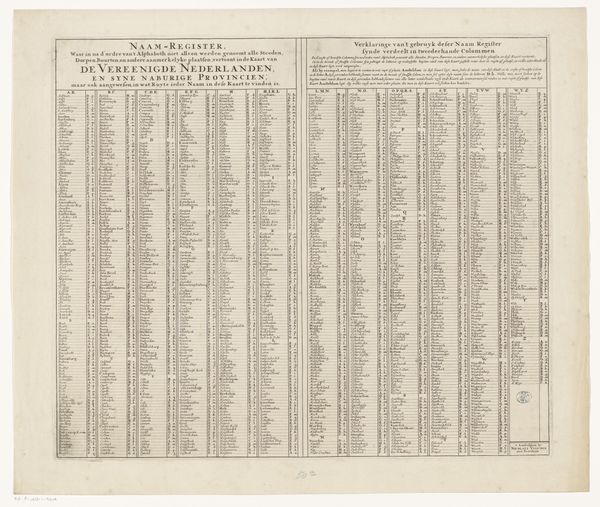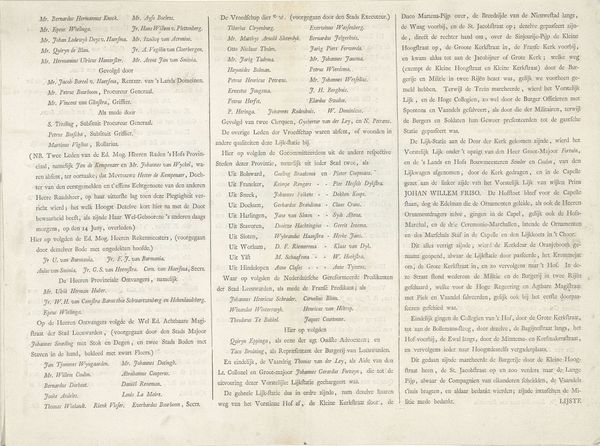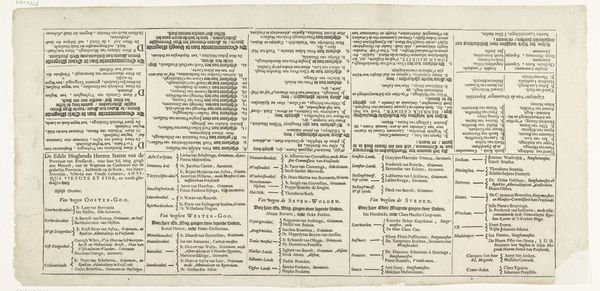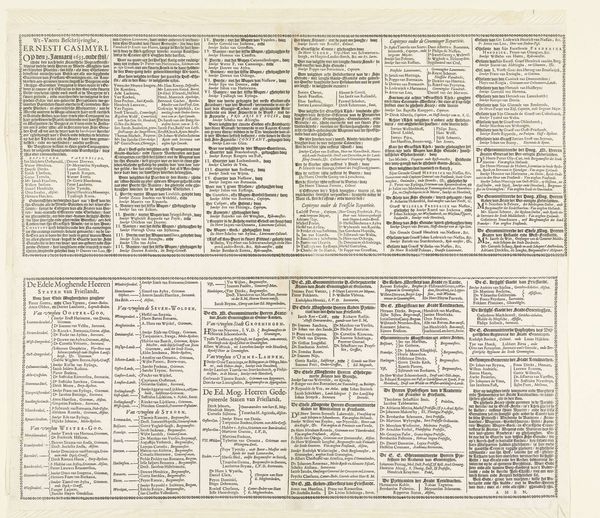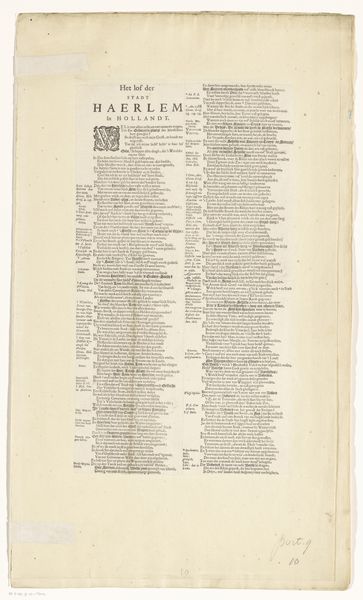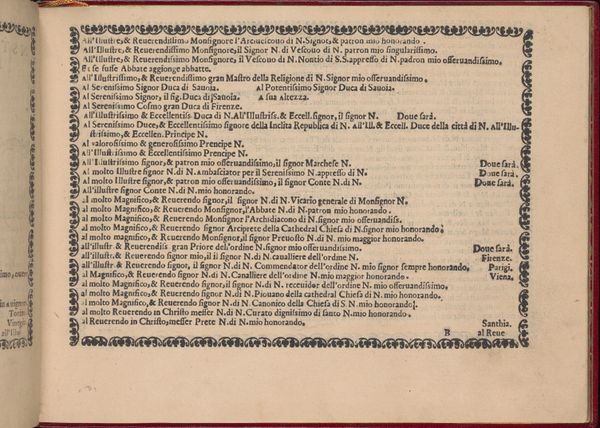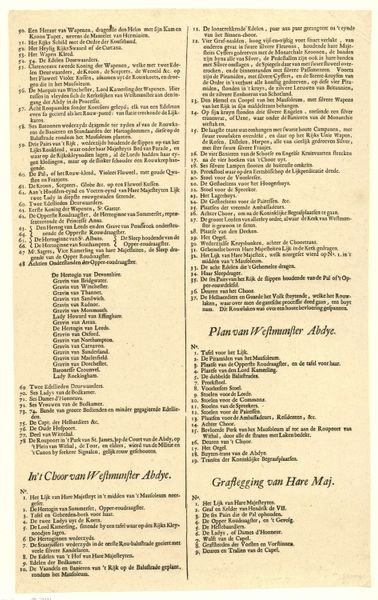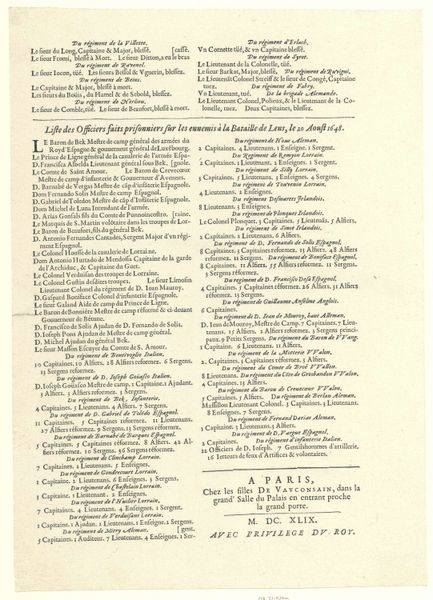
graphic-art, print, paper, typography, poster
#
graphic-art
#
aged paper
#
neoclassicism
# print
#
old engraving style
#
hand drawn type
#
paper
#
tea stained
#
typography
#
decorative-art
#
poster
Dimensions: height 493 mm, width 307 mm
Copyright: Rijks Museum: Open Domain
Editor: Here we have “Fondslijst met toneelstukken te koop bij Barker & Son te Londen,” which translates to something like "List of Plays for Sale at Barker & Son in London," dating from after 1803. It's a print on paper, essentially a theatrical advertisement. What immediately strikes me is how the aged paper and dense typography give it the aura of another era. What do you see when you look at it? Curator: I see a fascinating glimpse into the commercial side of theatre in London during a period of significant social and political change. Think about it: this isn't just a list of plays; it’s a commodity being marketed. Consider Covent Garden's place in the city - a hub of commerce and entertainment, but also of social unrest. The French Revolution cast a long shadow. The poster isn’t neutral; its seemingly simple act of listing plays reflects evolving attitudes towards art and entertainment and their growing availability to a wider public. Editor: So, the list itself is a political document, of sorts? Curator: In a way, yes. The choice of plays, their arrangement, the very act of selling them as printed texts - all this contributes to the cultural landscape. The decorative Neoclassical style hints at aspirations of taste and refinement, aligning theatre with intellectual and social ambitions. Who do you think was the target audience here? What kind of message would this kind of readily available textual form give, say, the monarchy? Editor: I guess more literate members of the growing middle class, people with the time and inclination to attend the theatre and read plays... but surely, they might challenge previously fixed hierarchies by making theatrical works more accessible. Theatres were historically exclusive! Curator: Exactly! By understanding the forces shaping it, like commercial theatre, available reading materials, and accessibility, we begin to grasp the intricate public role of art. Editor: It's amazing how much context is embedded in this piece of ephemera. I see it differently now!
Comments
No comments
Be the first to comment and join the conversation on the ultimate creative platform.
